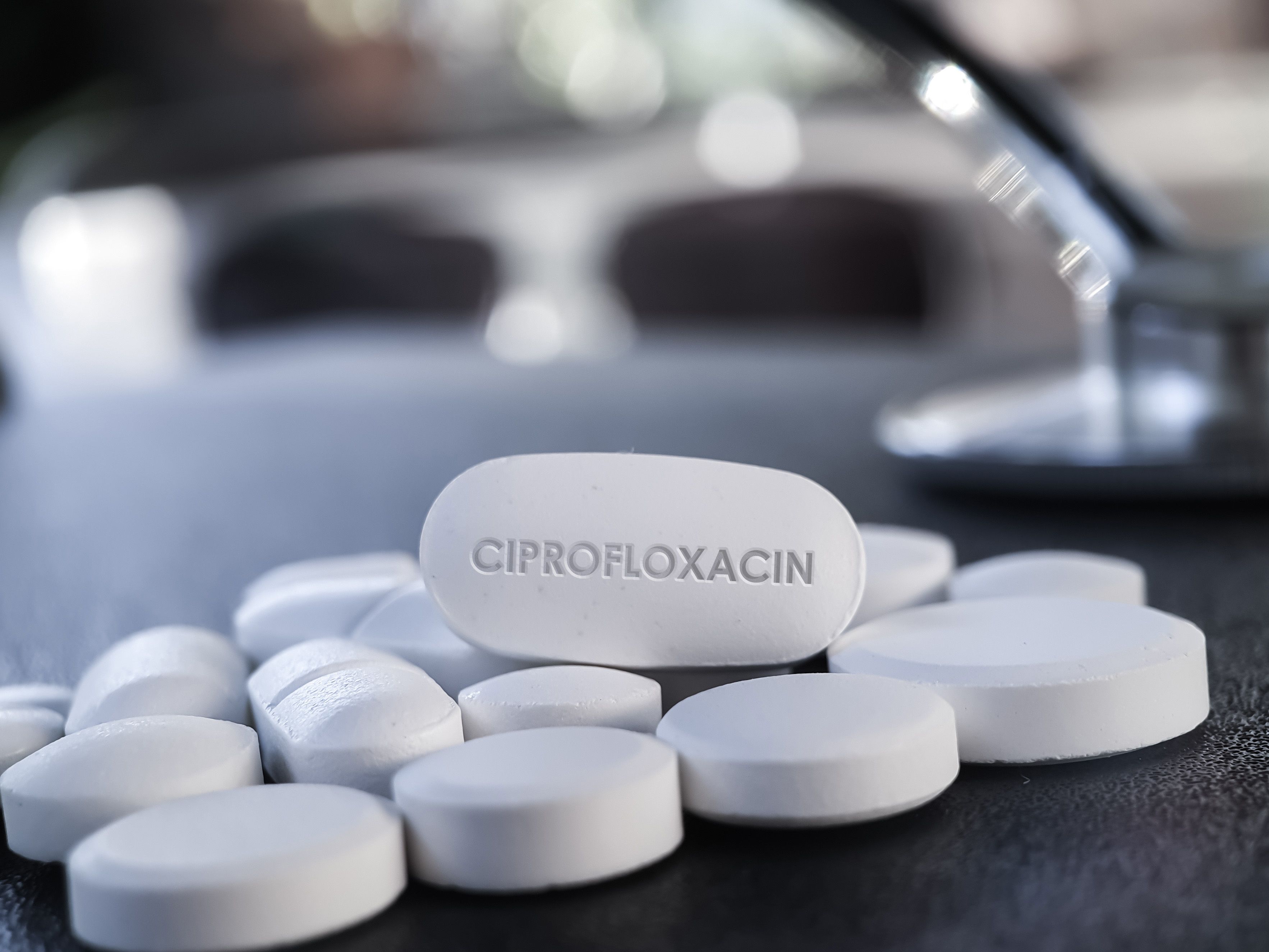New Study Reveals Impact of Alkyl Chain Length on Antibacterial Drug Interaction
The interaction between surface-active compounds (SACs) and ciprofloxacin was explored in this study to further understand how variations in alkyl chain lengths of SACs impact the binding activity of ciprofloxacin.
Ciprofloxacin is an antibacterial drug used for treatment of certain bacterial infections, including urinary tract infections (UTIs), sinus infections, prostate infections, lung infections, typhoid fever, and many others (1). The drug is designed to kill specific types of bacteria by disrupting or destroying their ability to repair their DNA (1). However, ciprofloxacin is only effective for certain infections depending on the germs causing the infection (1). As a result, understanding how surface-active compounds (SACs) can affect the binding activity of ciprofloxacin is important in developing new, strategic ways to treat most common infections.
Ciprofloxacin antiobiotic white pill medication | Image Credit: © Soni's - stock.adobe.com

A recent study published in Spectrochimica Acta Part A: Molecular and Biomolecular Spectroscopy explores the intricate interaction between surface-active compounds (SACs) and the potent chemo-therapeutic antibacterial drug ciprofloxacin (CIP) (2). Lead author Rajan Patel and his team from the Biophysical Chemistry Laboratory at the Centre for Interdisciplinary Research in Basic Sciences, Jamia Millia Islamia, conducted a series of experiments to understand how variations in alkyl chain length of SACs influence the binding and activity of ciprofloxacin (2).
Patel and his team conducted the study using multispectroscopic techniques, including time-resolved fluorescence spectroscopy. They looked at the complexation of ciprofloxacin with different concentrations of SACs, specifically N-(2-hydroxyethyl)-N,N-dimethyl-1-dodecanaminium bromide (12Cho.Br) and cetyltrimethylammonium bromide (CTAB) (2). They found that CTAB exhibited a higher binding constant (Kb) with CIP compared to 12Cho.Br, indicating stronger hydrophobic-hydrophobic interactions between CIP and CTAB (2).
The researchers found that complexes between the drug and SACs were formed in the presence of varying concentrations of 12Cho.Br and CTAB (2). Dynamic light scattering (DLS) and zeta potential analyses confirmed the formation of micelles by 12Cho.Br and CTAB, validating the drug complexation (2).
The study looked at the antibacterial activity of ciprofloxacin. In the presence of CTAB and 12Cho.Br, the lower concentrations of these SACs enhanced the activity of the drug, with the activity being dependent on the length of the cationic alkyl chain (2).The researchers also examined human embryonic kidney cells. They assessed the safety profile of ciprofloxacin with 12Cho.Br and CTAB, demonstrating the potential of these combinations as effective antibacterial agents with minimal cytotoxic effects (2).
This article was written with the help of artificial intelligence and has been edited to ensure accuracy and clarity. You can read more about our policy for using AI here.
References
- WebMD. Conrad, J.; Ed. Ciprofloxacin - Uses, Side Effects, and More. Available at: https://www.webmd.com/drugs/2/drug-7748/ciprofloxacin-oral/details (accessed February 8th, 2024).
- Bhat, A. R.; Parray, M. u. d.; Imtiyaz, K.; Rizvi, M. M. A.; Patel, R. Interaction and Antibacterial Activity of Ciprofloxacin with Choline based Ionic Liquid and CTAB: A Comparative Spectroscopic Study. Spectrochimica Acta Part A: Mol. Biomol. Spectrosc. 2024, 309, 123770. DOI: 10.1016/j.saa.2023.123770
New Study Reveals Insights into Phenol’s Behavior in Ice
April 16th 2025A new study published in Spectrochimica Acta Part A by Dominik Heger and colleagues at Masaryk University reveals that phenol's photophysical properties change significantly when frozen, potentially enabling its breakdown by sunlight in icy environments.
Advanced Raman Spectroscopy Method Boosts Precision in Drug Component Detection
April 7th 2025Researchers in China have developed a rapid, non-destructive Raman spectroscopy method that accurately detects active components in complex drug formulations by combining advanced algorithms to eliminate noise and fluorescence interference.